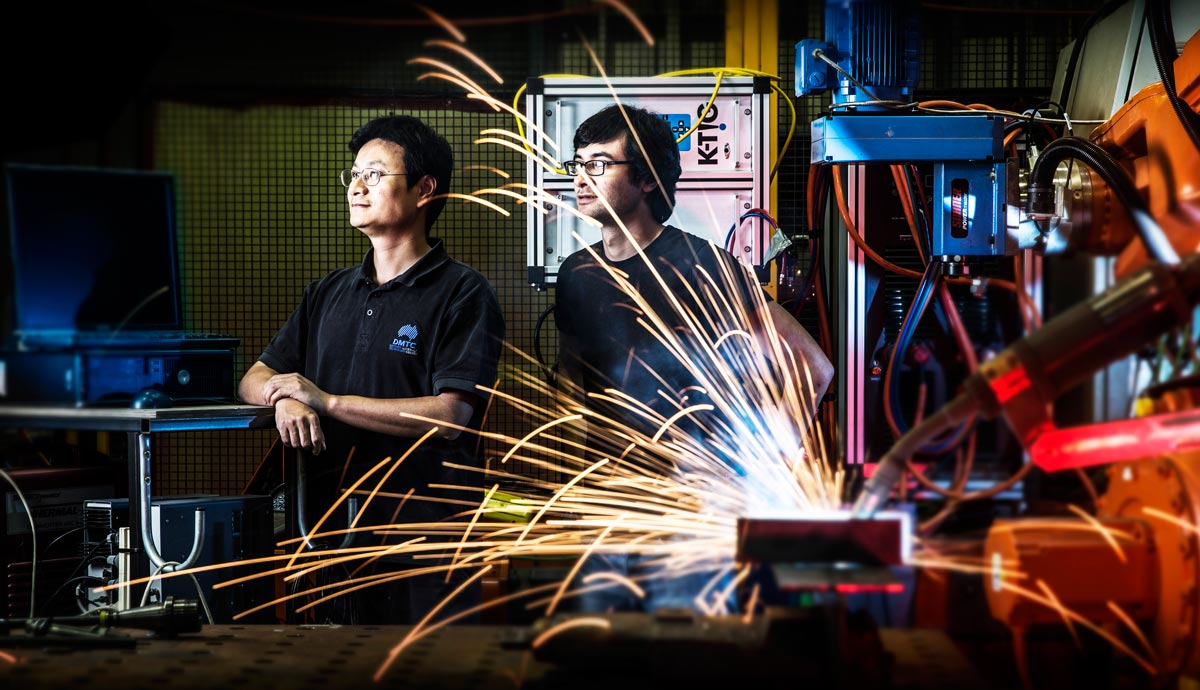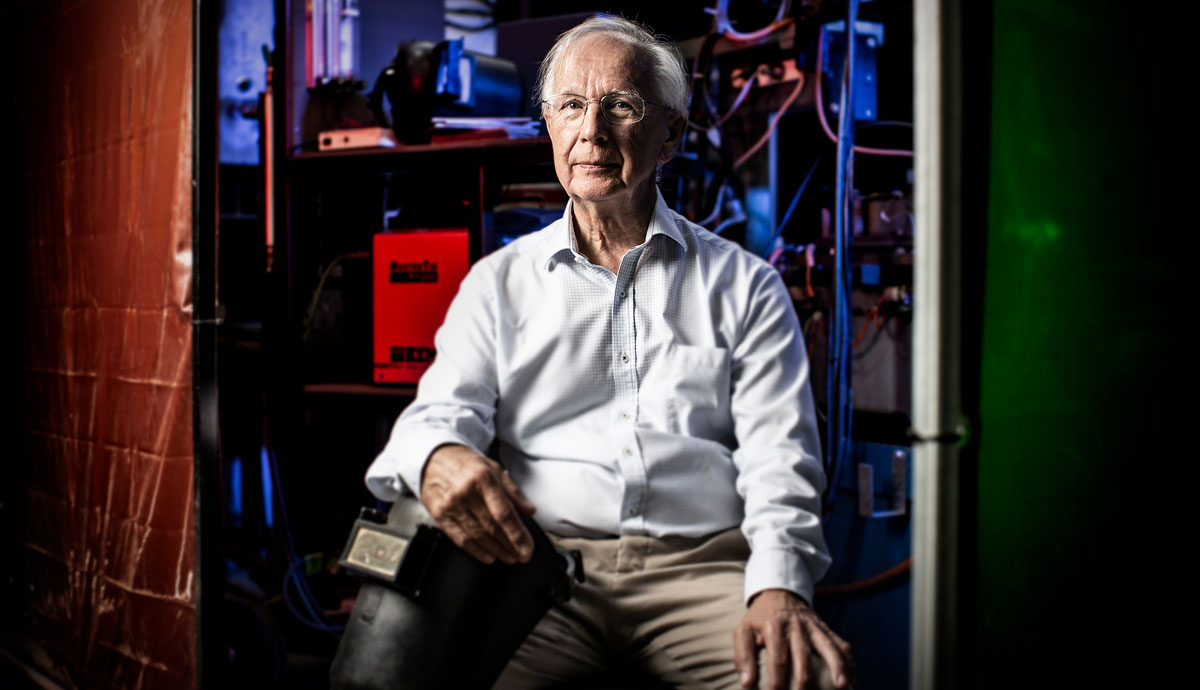December 19, 2018
Quiet achiever’s contribution to welding technology celebrated
Emeritus Professor John Norrish elected Fellow of American Welding Society for lifetime of distinguished contributions.
When Emeritus Professor John Norrish first entered the engineering industry in 1965, he was required to spend six months of the year on the workshop floor and the other half of the year studying at university.
The blended training, Professor Norrish said, has been the key to a career straddling research and industry, developing new welding technologies that are equal parts innovative and practical.
Not that the quietly spoken Englishman would ever let on what his accomplishments have been.
It’s left to the citation from his recent election as a Fellow of the American Welding Society (AWS) to bear testimony to the impact of his 50-year-plus career on welding technology worldwide, including through his 22-year association with the University of Wollongong (UOW).
“[Professor] Norrish’s influence in modern welding technology is so large and ubiquitous, that sometimes can be overlooked,” the AWS citation reads.
The AWS is the peak body for welding and joining technology in the United States, with about 70,000 members industry, national research labs, universities and training organisations from the US and around the world.
"You really did learn from the shop-floor experience how things are managed, the social environment of the workplace."
- Emeritus Professor John Norrish.
Being elected a Fellow of the Society is a recognition of the distinguished contribution of individual members in the field of welding science and technology.
Typically, only three people are elected each year and must be nominated by at least five other members who testify to the nominee’s outstanding accomplishments and technical impact of their work.
His AWS peers say he has “served the welding community and industry with great distinction as an individual who has contributed significantly to the knowledge, science, and application of welding; and he has had a long career both in academic welding research and in industry and has made significant contributions to advanced welding technology particularly in regard to arc process and equipment development, and process control”.
His humble attitude and aptitude for applied research can be traced back to the start of his career and education as a student-apprentice with Rubery Owen, an automotive parts engineering firm based in Darlaston, just west of Birmingham in the industrial heartland of the English Midlands.
With Rubery Owen, Professor Norrish studied metallurgy, completing his degree through Aston University.
“You really did learn from the shop-floor experience how things are managed, the social environment of the workplace,” Professor Norrish said. “It was an education that went beyond the technical skills and you really did learn about the social and management skills you needed to make an organisation function.”

He developed an interest in welding technology and later completed a post-graduate degree in welding and management, a choice that would eventually put him at the forefront of robotic and automated welding processes.
He would spend 15 years with the British Oxygen Company (now known as BOC), who made and supplied welding products to industry, provided technical support and had a research arm that was focused on new solutions and technology for welding.
After BOC he joined academia, spending a decade with Cranfield University, when a connection from a secondment to Australia during his time with BOC called to ask if he’s be interested in a job Down Under.
Twenty-two years later and though officially retired in 2010, the now-Emeritus Professor Norrish is reflecting on a 22-year association with UOW.
“When they made me an Emeritus Professor I had to look up the dictionary to see what ‘Emeritus’ meant. It didn’t give me much of a clue but I think it means something like no pay, but you’re expected to do things,” Professor Norrish joked.
He holds 10 patents, including two US patents, and his tenure has been marked by innovative commercial products which were developed based on his knowledge and understanding.
“It’s been wonderful to see people, researchers and students, progress, develop and leap ahead with the technology. It makes it all quite worthwhile.” - Emeritus Profess John Norrish
“Everything in welding technology has evolved over time,” Professor Norrish said. “Robotics was in its early stages in the late 1970s, there were no dedicated welding robots, we had robots for lifting and placing, but robotic welding only really became practical through the emergence of manual programming.
“I was probably always an early adopter of new technology. We were pushing the use of computers when they were mostly used for gaming, like the old Atari. We were putting computers in welding power sources at the time to see what we could do but it’s really been the past 15 years where proper automated off-line programming has become widespread.
“Now you have a CAD program for the object that enables the robot to calculate its movements and drive itself, then we can write the welding process on a laptop and send it to the robot via the cloud. The whole process can be done remotely.”
Key to developing and implementing the new technology has been Professor Norrish’s close connection with industry.
“It gives you a pragmatic view of the potential value of research outcomes. It helps you to be able to talk to industry and understand their problems and needs.”
Has it affected the quality of the research he’s been part of at UOW? “I’m biased, but yes. For the type of work we do, definitely,” Professor Norrish said.
True to his unassuming nature, he deflects the accolades to others.
“Over the years, I have made a very large number of friends in the international welding fraternity, I continue to learn a great deal about the science and technology of joining from these many colleagues. It’s been wonderful to see people, researchers and students, progress, develop and leap ahead with the technology. It makes it all quite worthwhile.”
